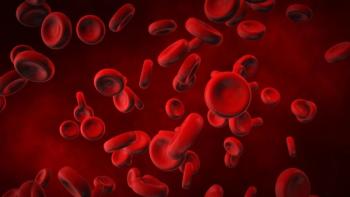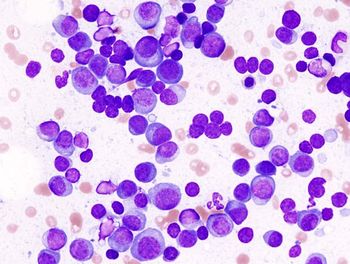
- Oncology Vol 28 No 4_Suppl_1
- Volume 28
- Issue 4_Suppl_1
(S006) Extended-Field IMRT With Concomitant Boost for Node-Positive Cervical Cancer: Analysis of Regional Control Rate and Recurrence Pattern
We have been treating patients with positive pelvic nodes with extended-field intensity-modulated radiation therapy (IMRT) to address the PA region prophylactically with a concomitant boost to the involved nodes. The purpose of this study is to assess regional control rates and recurrence patterns with this technique.
Sushil Beriwal, Serah Choi, Hayeon Kim, Joseph L. Kelley, Robert P. Edwards, Paniti Sukumvanich, John Comerci, Alexander B. Olawaiye; University of Pittsburgh Cancer Institute
Purpose: Positron emission tomography-computed tomography (PET-CT) is commonly used for nodal staging for locally advanced cervical cancer treated with primary chemoradiation therapy. Although it has high sensitivity and specificity for pelvic nodal staging, the false negative rates for para-aortic (PA) disease is 20% to 25% in patients with PET-positive pelvic nodal disease. Unless surgical staging is done in this subset to exclude PA nodal disease, pelvis-only treatment may undertreat PA disease. We have been treating patients with positive pelvic nodes with extended-field intensity-modulated radiation therapy (IMRT) to address the PA region prophylactically with a concomitant boost to the involved nodes. The purpose of this study is to assess regional control rates and recurrence patterns with this technique.
Materials and Methods: Sixty-one patients who were diagnosed from 2003–2012 with cervical cancer of stage IB1 to IVA with PET-avid pelvic nodes that were treated with extended-field IMRT were retrospectively analyzed. The nodal location was pelvic only in 41 (67%) patients and pelvis plus the PA region in 20 (33%) patients. The median cervical tumor and nodal sizes were 5.3 cm (range: 2–10 cm) and 1.8 cm (range: 0.7–4.5 cm), respectively. The median number of positive nodes in each patient was 2 (range: 1–16), with the total number of positive nodes being 179, including all patients. All but one patient was treated with concurrent weekly cisplatin The dose to the pelvis and PA region was 45 Gy in 25 fractions, with a concomitant boost to involved nodes to a median dose of 55 Gy in 25 fractions (range: 54–59.4 Gy). The median brachytherapy dose was 27.5 Gy in 5 fractions using either intracavitary or interstitial technique. A follow-up PET-CT was performed at 12–16 weeks to assess response.
Results: Complete clinical and radiographic response at the first follow-up for all sites was seen in 47 (77%) patients. Persistent nodal disease or progression of nodal disease at the first follow-up was seen in two patients (pelvic nodal disease in one patient and another with a new PA node with lung metastases). At a mean follow-up of 29 months (range: 3–116 mo), eight additional patients developed recurrences. The median time to recurrence was 14 months (range: 10–36 mo). The sites of persistence or recurrent disease were the cervix (10, 16.3%), regional nodes (3, 4.9%), and distant (14, 23%) (some had more than one site of relapse). The 3-year risk of local, regional, and distant recurrence and disease-free survival (DFS) was 75.8%, 93.9%, 66.7%, and 56.9% respectively. The 3-year DFS for pelvic node only–versus pelvic plus PA node-positive disease was 63.8% versus 39%, respectively. On multivariate analysis, only stage predicted for worse DFS. The rate of late grade 3 and above complications was 4%.
Conclusions: Extended-field IMRT in patients with PET-positive pelvic nodes was well tolerated and resulted in very low regional recurrence rates. The dose of 55 Gy in 25 fractions was effective in eradicating disease in the involved nodes without increasing the risk of late complications. Distant metastases were the predominant mode of failure in these patients, and the OUTBACK trial may define the benefit of additional chemotherapy.
Proceedings of the 96th Annual Meeting of the American Radium Society -
Articles in this issue
Newsletter
Stay up to date on recent advances in the multidisciplinary approach to cancer.

















































































